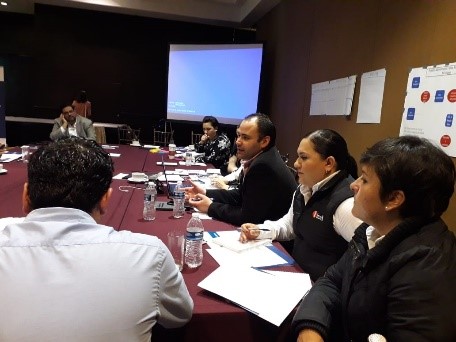Because the pace of change is ever increasing, U.S. government agencies must find a way to innovate more rapidly and with greater effectiveness to achieve complex goals.
Agency leaders must have the agility and experience to move organizational culture in an innovative direction regardless of whether their agencies are already at the forefront of the government innovation movement or shifting from an emergency management pace to a more strategic one.
MSI has worked with a variety of federal clients to bring about change employing co-creation, developing innovative processes, and applying adaptive management.
The following examples reflect some of our experiences and lessons learned.
Co-Creating New Products and Services
USAID has been at the forefront of a movement to integrate science and technology into its programming. Through a formal program, STIP, it is trying to unleash staff ingenuity, create breakthrough solutions, and identify and scale innovation in development work.
We’re working hand in hand with USAID through a multi-year effort to build organizational capacity and skills Agency-wide.
Our combined teams have shared equally in the design and delivery of a training of trainers’ program. Bringing key stakeholders from the client, MSI, and future customers (U.S. foreign and civil service officers, and foreign service nationals) together to develop the trainings enabled the team to develop responsive trainings with buy-in that truly addressed the needs of both the client and customers.
In “Collective Genius: The Art and Practice of Leading Innovation” by Linda Hill, Greg Brandeau, Emily Truelove and Kent Lineback, the authors put forth the paradox of “affirming the individual and the group.” The more diverse the set of ideas that emerge from a cross-section of teams or groups, the better. This kind of cross-team and cross-perspective collaboration encourages diverse ideation from a variety of perspectives.
 STIP training participants engaging in an experiential exercise at the Washington Learning Center in Arlington, VA in 2018
STIP training participants engaging in an experiential exercise at the Washington Learning Center in Arlington, VA in 2018
Developing Innovative Processes
The U.S. Department of Agriculture’s Agricultural Research Service (ARS) engaged MSI to assist them with improving a business process called extramural agreement. ARS scientists regularly conduct research with outside entities through partnership arrangements called extramural agreements. Our team believed that the best way to engage senior managers and empower line employees to generate ideas for improvement and efficiency gains was to use a participatory methodology known as Lean Enterprise. Ultimately, we helped the ARS yield significant savings in time and productivity of fifty percent or more.
The success of the process was bolstered by the team’s ongoing consultations with the client’s executive leadership team, including the ARS Administrator. Through these consultations and senior leadership’s buy-in, we developed a realistic set of recommendations and a six-month implementation plan. Our team handed off these products to leadership to move forward with implementation.
Using Adaptive Management to Foster Innovation
In Mexico, we began a critical USAID-funded project at a time of political uncertainty due to upcoming elections. USAID employed us to help implement the National Anti-Corruption System at the federal and state levels. We began the work before the system had been fully created.
Given the challenges and complexities, USAID was open to trying new or novel approaches that might address the issues. This opened the door for us to use adaptive management techniques to change course as needed.
To inform decision making, we conduct periodic political economy analyses to swiftly adapt to ongoing changes. This tool enables us to identify key stakeholders who support or resist change, and then design strategies for bolstering those who support the change and discouraging the activities of those who oppose the change.
In collaboration with key Mexican government and civil society stakeholders charged with implementing the new anti-corruption system, we also work with the Rapid Results Institute to conduct “100-day challenges.”
The goal of the challenges is to achieve quick, public, and tangible results in the fight against corruption and to foster credibility in the National Anti-Corruption System. Using this approach, we bring together these stakeholders to identify a challenge to curb corruption and work jointly to find and implement innovative solutions to overcome the challenge in a period of only 100 days.
Although efforts to combat corruption can take decades to take root, the 100-day challenges generate actionable, workable solutions that can be quickly implemented to begin effectively stamping-out government abuses.
These examples demonstrate various methods that government agencies can use to generate innovative solutions that achieve results. Regardless of where agencies may be in terms of setting up a culture of innovation, agency leaders can use these and other approaches to begin to shift focus toward creativity and innovation.

